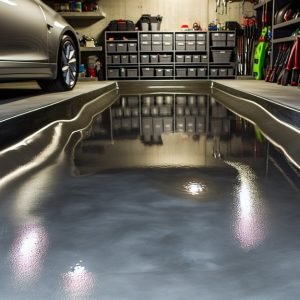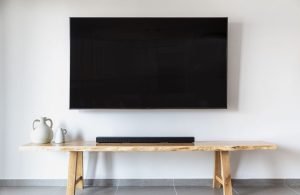Last Updated on October 30, 2025 by teamobn
A thoughtful landscape design can improve your home’s curb appeal and functionality as well as help boost your home’s value. Below are six battle-tested tips to help you choose the best landscape design, with each suggestion meant to encourage your outdoor space to thrive.
Contents
Know Your Needs and Lifestyle
Start by determining how you plan to utilize your outside space so that your design will suit your lifestyle. Do you want barbeque gatherings, a safe play area for your kids, or a spot for a serene retreat garden?
Consider your requirements (entertaining guests, relaxation, maintenance-free), and realistically think about what you envision.
For example, if you have a family, open lawn areas for group activities take priority over plant choice; if you work a lot, drought-tolerant varieties are a better preference to reduce upkeep. Other factors include your climate, available time to upkeep, and long-term considerations (if you want to put in a pool or a pergola one day).
Involving your household members is essential to clarify needs; children can elaborate on play space, pets need an area to play, feel safe from predators and, perhaps, breed, and people may want to grow vegetables. Look to create a relaxing outdoor space.
Doing a complete assessment of your outdoor needs will alleviate the risk of costly redesigns and create a unique outdoor space. When you choose your design based on daily realities, you can create a usable, enjoyable indoor/outdoor transition that reflects your home’s integrity and provides everyone with a better quality of life.
Create a Realistic Budget
As you create your budget, be sure to include all your expenses. Landscaping is hard to budget since landscaping can range from small planting to big hardscaping with installs such as a retaining wall or a patio.
Begin by determining what you ‘must’ have included, such as plants, irrigation systems, walks, or waterfalls, and research how much things will be. All costs for the project must include labor, materials, and all costs related to the ongoing maintenance of features (i.e., irrigation and watering; these are all costs that accumulate in the future and must be accounted for).
After researching items and their costs, it is best to identify and prioritize those high-impact features that will drive the value of your landscape, such as a large tree or outdoor seating area. To avoid surprises and red flags in your budgeting process, get a couple of quotes from reputable (those that come from a recommendation) contractors. This will assist with comparing services and provide transparency. If your friends can’t help with recommendations, use social media and/or Google searches and scrutinize the reviews there.
It is recommended to allocate 10-15% of your budget for unforeseen incidents like added soil amendments or incorrect drainage issues to mitigate future development problems. If the budget is tight, phasing your landscape plans can be achieved over time.
Start with necessary items such as the establishment of a lawn or garden space. A functional budget plan will give you more confident decision-making abilities to help you find that happy ground between aesthetics and functionality without emptying your finances. Establishing budgets will allow you to create a beautiful and productive landscape that increases the appeal of your home within the budget you are comfortable with.
Know Your Property’s Conditions

Understanding your property’s conditions is the secret to developing an effective landscape design. Study the drainage patterns to avoid water accumulation and erosion, particularly on sloping land. Check your growing region’s climate (precipitation, extremes in temperatures, and seasonal changes) to assess which plants will better handle resilient species in your regional climate.
By showing these factors on a map, you can minimize maintenance issues and help place plants where they can succeed with little attention. Understanding the strengths and limitations of your site enhances your opportunity for sustainable design that reflects your home’s exterior appearance, reduces costs, and works with rather than against the natural conditioning of your environment.
Modern landscaping best practices for commercial properties balance aesthetics, functionality, and professionalism. The process should be based on using durable and low-maintenance plants that will result in low upkeep costs and make the property look good all year. Selecting native shrubs or evergreen perennials works well. It’s essential to design walkways and parking lots to help people get to and from places clearly and efficiently and support the traffic that will likely be present. landscaping best practices for commercial properties.
Select Low-Maintenance Plants
Planning low-maintenance plants is one of the best ways to design a vibrant living landscape that saves time, effort, and material. Native plants are ideally suited to the climate, soil, rainfall, etc., where they grow and require little irrigation and fertilizer.
Reduced irrigation and maintenance (such as only watering or fertilizing the plants when needed) will reduce your gardening workload. For this reason, it’s essential to avoid high-maintenance plants, including a few varieties of roses, unless you are happy to create a maintenance schedule to dedicate the time and effort needed. You can apply mulch to your landscape to keep moisture still and help stop weeds, which will also help the watering scheme.
Choose disease-resistant local plants whenever possible to minimize your pesticide use. You can ask local garden centers to recommend resilient, native plants from your area and low-maintenance designs that save you time and reduce your utility bills by helping you use water more efficiently. Some plants will flourish and grow more naturally. If they have heartily established landscapes, it often means less maintenance and obligation for you, which improves the pleasure of using your outside living space.
Plan for a Beautiful Landscape Every Season
Balancing plants with seasonal habits can create a beautiful landscape for every year’s season. The structure of your winter landscape may be the evergreen species you selected, such as rhododendrons, and the maples will dominate your fall landscape. Hardscapes such as a rock wall, speck-built benches, and special sculpture pieces will also interest your winter landscape. Lighting can be incorporated to highlight certain trees, pathways, or water elements around dusk for evening use.
Employ a variety of plant textures, colors, and bloom periods; summer hydrangea and winter-hellebores, also known as winter roses or Lenten roses, are season opposites to plant in different planting calendars but are compatible with each other. Use seasonal material for your local area for lifespan. This will let you create a family-friendly backyard throughout the year.
A seasonally planned house will provide a landscape you can be proud of all year-round, while improving curb appeal, and providing a living space that enhances your home regardless of the season.
Emphasizing Sustainable Landscaping
Sustainable landscape practices use less natural environmental (degradation), require less maintenance, and better use of resources. Implement xeriscaping using low-water or water-efficient plants (like lavender and yucca) better to conserve water in areas prone to drought moisture.
Cooperate organic pesticides and fertilizers to minimize chemical use—mulch landscape clippings to enhance soil health using traditional compost. Plant native plants to benefit local pollinators and wildlife. Incorporate solar-powered lighting to save energy. These techniques save effort and expense and develop robust landscapes requiring little maintenance.
Endnote
These six ideas show you how to create a landscape that will enhance your home or commercial property and reflect your personality and values. Combining serviceability, sustainability, and aesthetics will create an outdoor space that is a natural extension of your lifestyle or brand and provides you with long-term beauty and function.






